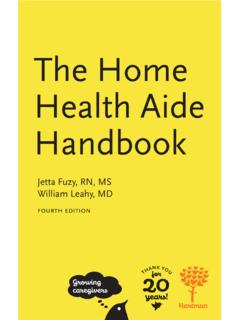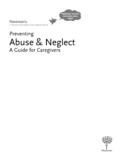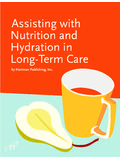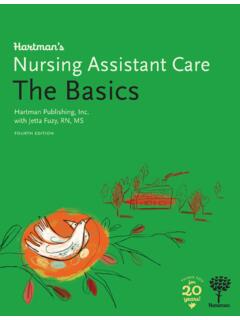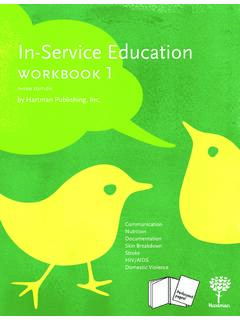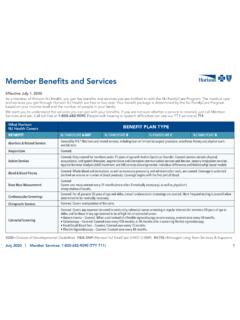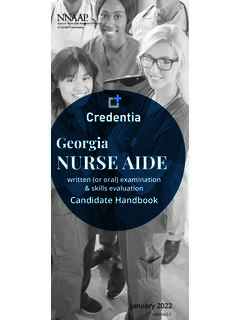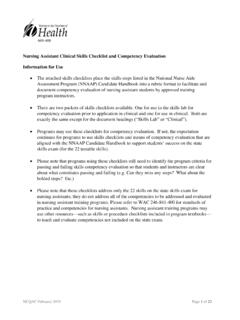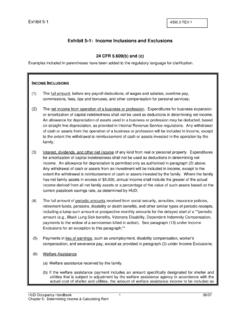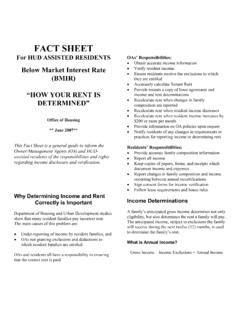Transcription of The Home Health Aide Handbook - hartmanonline.com
1 Grrowing carregiverrssThe home Health Aide HandbookJetta Fuzy, RN, MSWilliam Leahy, MDfourth editioniiiAcknowledgmentsManaging EditorSusan Alvare HedmanDesignerKirsten BrowneProductionThad CastilloPhotographyMatt Pence, Pat Berrett, Art Clifton, and Dick RuddyProofreadersKristin Calderon, Kristin Cartwright, and Joanna OwusuSales/MarketingDeborah Rinker, Kendra Robertson, Erika Walker, and Belinda MidyetteCustomer ServiceFran Desmond, Thomas Noble, Angela Storey, Eliza Martin, and Jeff BrownWarehouse CoordinatorChris MidyetteCopyright Information 2015 by Hartman Publishing, Inc. 1313 Iron Ave SW Albuquerque, New Mexico 87102 (505) 291-1274 web: email: Twitter: @HartmanPubAll rights reserved. No part of this book may be reproduced, in any form or by any means, without permission in writing from the 978-1-60425-056-5 PRINTED IN THE USA iiiNotice to ReadersThough the guidelines and procedures contained in this text are based on consultations with healthcare professionals, they should not be considered absolute recommendations.
2 The instructor and readers should follow employer, local, state, and federal guidelines concerning healthcare practices. These guidelines change, and it is the reader s responsibility to be aware of these changes and of the policies and procedures of his or her healthcare agency. The publisher, author, editors, and reviewers cannot accept any responsibility for errors or omissions or for any consequences from application of the information in this book and make no warranty, express or implied, with respect to the contents of the book. The publisher does not warrant or guar-antee any of the products described herein or perform any analysis in con-nection with any of the product information contained ThanksA very warm thank you goes to our insightful reviewers: Candace S. Barth RN, BSNJ unction City, WISusan Meier, RN, BSNG loucester Township, NJNelson Wood, RN, BSN, CRRN New Hartford, NYGender UsageThis textbook utilizes the pronouns he, his, she, and hers interchangeably to denote care team members and clients.
3 VSpecial Precautions 30 Transmission-Based Precautions 31 Safety and Body Mechanics 34 Principles of Body Mechanics 34 Accident Prevention 36 Travel Safety 40 Emergencies 42 Medical Emergencies 42 Disaster Guidelines 49 III. Understanding ClientsCulture and Family 53 Basic Human Needs 53 Cultural Differences 54 Families 55 Body Systems 56 Common Disorders/Observing and Reporting 57 Human Development 66 Stages/Common Disorders 66 Aging 69 Death 70 Hospice Care 73I. Defining home Health ServicesHome Health Care 1 Payers 1 Purpose of home Care 1 Agency Structure 2 HHA s Role 3 The Care Team 4 The Care Plan 5 Chain of Command 6 Policies and Procedures 7 Professionalism 8 Legal and Ethical Aspects 10II. Foundation of Client CareCommunication 16 Barriers to Communication 17 Oral Reports 17 Documentation 19 Telephone Communication 21 Infection Prevention 22 home Care Bag 22 Spread of Infection 22 Standard Precautions 23 Personal Protective Equipment (PPE) 27 ContentsPagePageTopic viIV.
4 Client CareMaintaining Mobility, Skin, and Comfort 75 Positioning 75 Transfers and Ambulation 78 Range of Motion Exercises 86 Skin Care 92 Comfort Measures 94 Personal Care Procedures 97 Bathing 98 Grooming 105 Oral Care 113 Toileting 118 Vital Signs 123 Temperature 124 Pulse 130 Respirations 132 Blood Pressure 132 Pain 134 Height and Weight 135 Special Procedures 137 Intake and Output (I&O) 137 Catheter Care 140 Ostomy Care 143 Collecting Specimens 144 Non-Sterile Dressings 149 Warm and Cold Applications 149 Medications 154 Oxygen 159 IVs 160V.
5 Special Clients, Special NeedsDisabilities and Mental Illnesses 162 Disabilities 162 Mental Illnesses 163 Special Conditions 167 Arthritis 168 Cancer 169 Diabetes 172 CVA or Stroke 175 Multiple Sclerosis (MS) 178 Circulatory Disorders 179 HIV and AIDS 183 Dementia 186 Alzheimer s Disease (AD) 187 Chronic Obstructive Pulmonary Disease (COPD) 192 Tuberculosis (TB) 193 Hip or Knee Replacement 194VI. home Management and NutritionThe Client s Environment 197 Housekeeping 197 Laundry 205 Bedmaking 208 PageTopicPage TopicviiProper Nutrition 211 Nutrition 211 Special Diets 219 Planning and Shopping 224 Preparing and Storing 225 Managing Time and Money 231 Managing Time 231 Work Plan 232 Client s Money 233 VII.
6 Caring for YourselfContinuing Education 234 Stress Management 235 Your Career 237 VIII. AppendixAbbreviations 240 Glossary 242 Index 249 Important Names/Numbers 256 Community Resources 257 PageTopicviiiProceduresWashing hands (hand hygiene) 26 Putting on (donning) gown and removing (doffing) gown 27 Putting on (donning) mask and goggles 28 Putting on (donning) gloves 29 Removing (doffing) gloves 30 Performing abdominal thrusts for the conscious person 44 Responding to a heart attack 48 Assisting a client to sit up on side of bed: dangling 77 Transferring a client from bed to wheelchair 80 Helping a client transfer using a slide board 81 Transferring a client using a mechanical lift 82 Assisting a client to ambulate 83 Assisting with ambulation for a client using a cane, walker, or crutches 85 Assisting with passive range of motion exercises 88 Giving a back rub 96 Helping a client transfer to the bathtub 99 Helping the ambulatory client take a shower or tub bath 100 Giving a complete bed bath 102 Shampooing hair 106 Combing or brushing hair 108 Providing fingernail care 109 Providing foot care 110 Shaving a client 111 Providing oral care 113 Providing oral care for the unconscious client 114 Flossing teeth 115 Cleaning and storing dentures 116 Reinserting dentures 118 Assisting client with use of a bedpan 119 Assisting a male client with a urinal 121 Assisting a client to use a portable commode or toilet 123 Measuring and recording oral temperature 126 Measuring and recording rectal temperature 127 Measuring and
7 Recording tympanic temperature 129 Measuring and recording axillary temperature 129 Measuring and recording apical pulse 131 Measuring and recording radial pulse and counting and recording respirations 132 ProcedurePagePageProcedureixMeasuring and recording blood pressure (one-step method) 133 Measuring and recording weight of an ambulatory client 135 Measuring and recording height of a client 136 Measuring and recording intake and output 138 Observing, reporting, and documenting emesis 139 Providing catheter care 141 Emptying the catheter drainage bag 142 Providing ostomy care 143 Collecting a sputum specimen 145 Collecting a stool specimen 145 Collecting a routine urine specimen 146 Collecting a clean catch (mid-stream) urine specimen 147 Collecting a 24-hour urine specimen 148 Changing a dry dressing using non-sterile technique 149 Applying warm compresses 151 Administering warm soaks 151 Assisting with a sitz bath 153 Applying ice packs 153 Applying cold compresses 154 Providing foot care for the diabetic client 174 Putting elastic stockings on a client 182 Cleaning the bathroom 203 Doing the laundry 206 Making an occupied bed 209 Making an unoccupied bed 211 Assisting a client with eating 230 PagePageProcedureProcedurexWe hope you will happily place this little reference book into your purse, backpack, or your home care visit bag and leave it there so you will have it available at all times as you go about your day-to-day duties as a home Health aide.
8 This Handbook will serve as a quick but comprehensive reference tool for you to use from client to and BenefitsThis book is a valuable tool for many reasons. It includes all the procedures you learned in your home Health aide training program, plus references to abbreviations, medical terms, care guidelines for spe-cific diseases, and an appendix where you can write down important names and phone numbers. For cer-tified nursing assistants moving to home care, we have included information on making the transition from facilities to homes. In addition, this book con-tains all of the federal requirements for home Health aides, so it can also be used in a basic training to Hartman Publishing s home Health Aide Handbook !xiWe have divided the book into eight parts and assigned each part its own colored tab, which you will see at the top of every Defining home Health ServicesII. Foundation of Client CareIII. Understanding ClientsIV. Client CareV. Special Clients, Special NeedsVI.
9 home Management and NutritionVII. Caring for YourselfVIII. AppendixYou will find key terms throughout the text. Expla-nations for these terms are in the Glossary section of the Appendix of this book. Common Disorders, Guidelines, and Observing and Reporting are also colored for easy reference. Procedures are indicated with a black bar. There is also an index in the back of the book. We will be updating this guide periodically, so don t hesitate to let us know what you would like to see in the next Handbook we publish. Contact us at Hartman Publishing, Inc. 1313 Iron Avenue SW Albuquerque, NM 87102 Phone: (505) 291-1274 Fax: (505) 291-1284 Web: E-mail: Twitter: @HartmanPubxiiBeginning StepsWash your hands. Handwashing provides for infection prevention. Nothing fights infection like performing consistent, proper hand hygiene. Handwashing may need to be done more than once during a pro-cedure. Practice Standard Precautions with every the procedure to client, speaking clearly, slowly, and directly.
10 Maintain face-to-face contact whenever have a right to know exactly what care you will provide. It promotes understanding, cooperation, and inde-pendence. Clients are able to do more for themselves if they know what needs to happen. Provide privacy for the this maintains the client s right to privacy and dignity. Providing for privacy is not simply a courtesy; it is a legal right. If the bed is adjustable, adjust bed to a safe level, usually waist high. If the bed is movable, lock bed the client has an adjustable bed, locking the bed wheels is an important safety measure. It ensures that the bed will not move as you are performing care. Raising the bed helps you to re-member to use proper body mechanics. This prevents injury to you and to the client. Beginning and ending steps in care proceduresFor most care procedures, these steps should be performed. Understanding why they are important will help you remember to perform each step every time care is addition to the beginning and ending steps listed above, remember to follow infection prevention guidelines.
